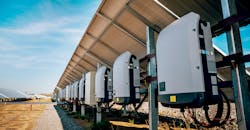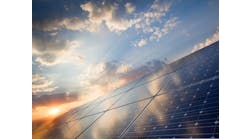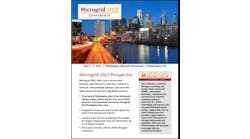‘Synthetic Inertia’ Could Be the Solution to Texas’ Clean Electric Grid Growing Pains
Everything’s bigger in Texas, as the saying goes, and it’s no different for the state’s power sector. Texas consumes and generates the most electricity in the United States, and it generates the most wind energy—a staggering 26% of total U.S. wind generation in 2021.
For states like Texas, where more than a third of its generation is expected to come from wind and solar in 2023, the growing portion of electricity from intermittent renewable energy sources and the dwindling number of conventional generators kept online is challenging the old ways grid operators keep the electric grid stable. The increasing frequency of extreme heat, driven by climate change and expected to get worse, is only exacerbating the grid stability challenge.
As recently as September, these forces collided again when high temperatures pushed demand in the Electric Reliability Council of Texas (ERCOT) market to spike to 82,705 MW on Sept. 5. While that’s not a record peak, the combination of high demand, low winds across the state and a drop in solar generation as the sun set led ERCOT to issue an energy emergency alert that day from 6–9 p.m.
When demand surges and renewable energy fluctuates, meeting demand with supply isn’t the only grid challenge. Maintaining frequency is another essential grid stability task that becomes difficult under those conditions. The force that allows the rotating mass in conventional generators to stabilize frequency on the grid is inertia. Spinning generators rotate at the same speed all the time, allowing grid operators to rely on their inertia as a predictable resource to dampen the frequency-jostling impact of supply and demand changes on the grid.
But as intermittent renewable energy grows past 40% to 50% of a market’s generation, there tend to no longer be enough spinning generators online to provide the necessary inertia for frequency regulation. Many states are grappling with this new reality now, and there’s not yet a consensus on solutions.
However, the capability exists in the growing number of distributed energy resources (DERs) like wind turbines, solar PV systems, and battery energy storage systems (BESSs) on the grid to create “synthetic inertia.” These non-spinning, inverter-based DERs can provide the same, or even better, grid-stabilizing services compared to spinning mass from synchronous generators. With high-resolution, high-speed data and a closed-loop generating asset controller – such as a distributed energy resource management system (DERMS) or microgrid controller – DERs can be controlled to provide a similar or better response to events that disturb frequency on an electric grid.
Though the concept is relatively new, ERCOT began building its capacity for non-spinning frequency regulation way back in 2012 when it began to require all new wind and solar interconnections provide primary frequency response, which is technically very similar to synthetic inertia. More recently, BESSs have joined wind and solar as a key piece in the grid stability puzzle, both helping ERCOT meet peak demand in September and instantly responding to preserve frequency in June when a nuclear plant tripped offline.
In 2018, ERCOT reported that its primary frequency response capabilities had greatly reduced the Texas grid’s need for secondary frequency regulation services from batteries and demand-side resources. More recently, ERCOT created a fast frequency response (FFR) market in which inverter-based resources that can be dispatched instantly are used to mitigate frequency fluctuations that lead to grid instability.
An advanced control system that complies with all ERCOT’s FFR regulations is required to participate in the market, and PXiSE’s Renewable Power Plant Controller is one such controller that meets the latest performance requirements.
To learn more about this emerging solution for frequency regulation on electric grids with high levels of renewable energy, read the latest white paper on synthetic inertia from PXiSE Energy Solutions.








